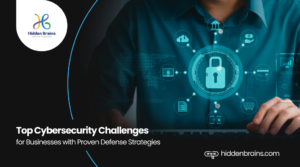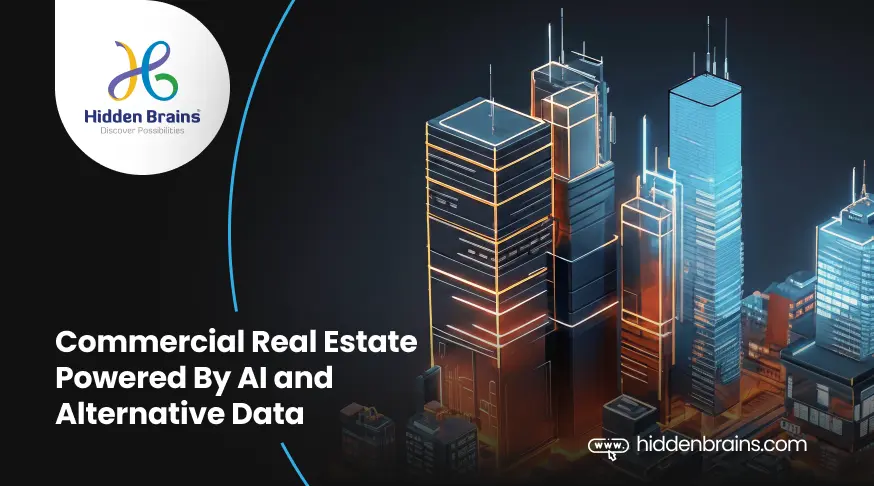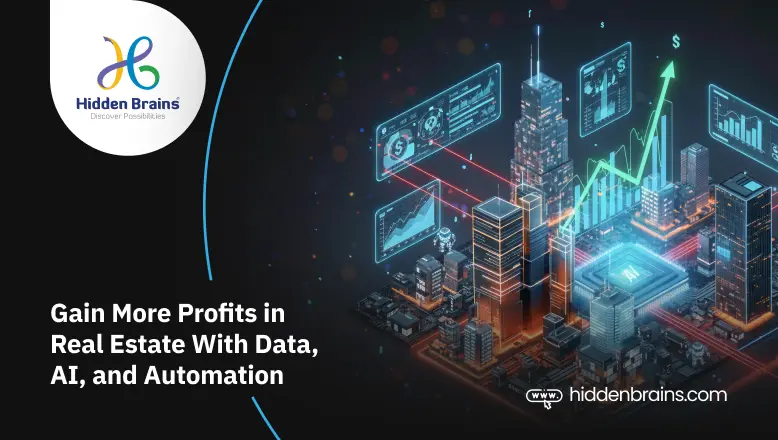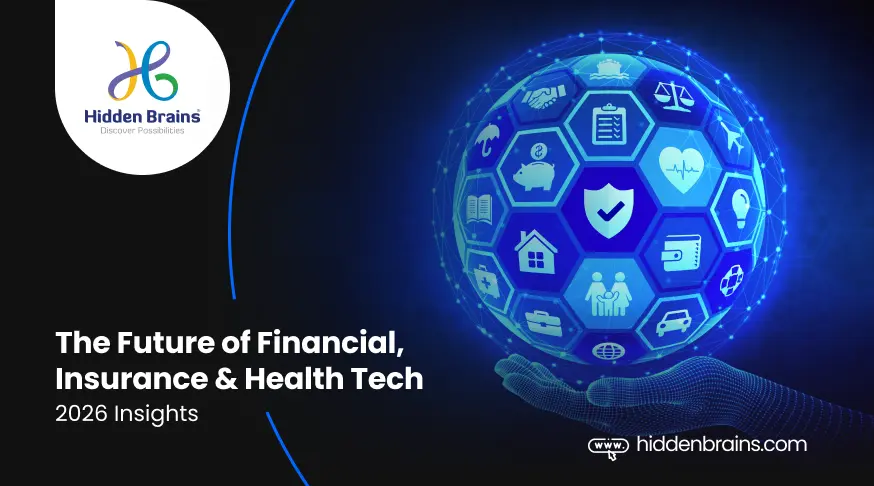Summary
Cybersecurity threats are rising fast, putting businesses at serious risk. Common challenges include phishing attacks, ransomware, weak passwords, and poor data protection. Many companies also face insider threats, outdated systems, and cloud-security gaps. These issues can lead to data leaks, financial loss, and a damaged reputation. Read the blog to understand how you could become the next victim and learn how to be cautious and build a strong defense against these threats.
Cybercrimes are rising, and cybersecurity challenges have become the most pressing issues in today’s digital world. One of the leading security topics nowadays is corporate cyber threats worldwide, from banking and financial services to healthcare and information technology to eCommerce and consumer goods. Companies are losing billions of dollars with phishing attacks, malware attacks, and data breaches that are more and more common.
Why must businesses know about the prominent cybersecurity challenges of modern times? What are the most significant risks companies face? And most importantly, how can they stay protected? We have the answers to these questions by providing comprehensive strategies and the latest techniques to battle the most pressing challenges of cyber security.
So, please read the article till the end to know everything you need about emerging cyber crimes and how to mitigate them.
Understanding the Growing Cybersecurity Challenges
Enterprises throughout all industries have experienced major effects from the increasing frequency of cybercrimes. Enterprises face substantial financial liabilities to what extent? The following business statistics will likely surprise any entrepreneur who reads them. The worldwide economy suffered an 8 trillion dollar loss from multiple cyber attacks during 2023, with experts projecting that this figure will rise to $24 trillion by 2027. The financial expense from cyberattacks increased in 2024 to more than $9 trillion and still rose despite being higher in the previous year.
Big tech companies, banking firms, and even small organizations are vulnerable to cyber-attacks. In 2023, 41% of all small and medium enterprises faced cyber attacks and spent more than $16,000 as ransoms to cyber criminals. Numbers clearly show that apart from big enterprises, cybercriminals and hackers are more likely to attack small enterprises due to their weak information security infrastructure and limited resources.
The Pressing Cybersecurity Challenges for Modern Businesses
Companies must monitor fast-evolving enterprise cybersecurity threats to protect their operational frameworks with adequate defensive measures. Security points of weakness allow sophisticated cybercriminals to reach these targets while they exploit operational functions and sensitive information.
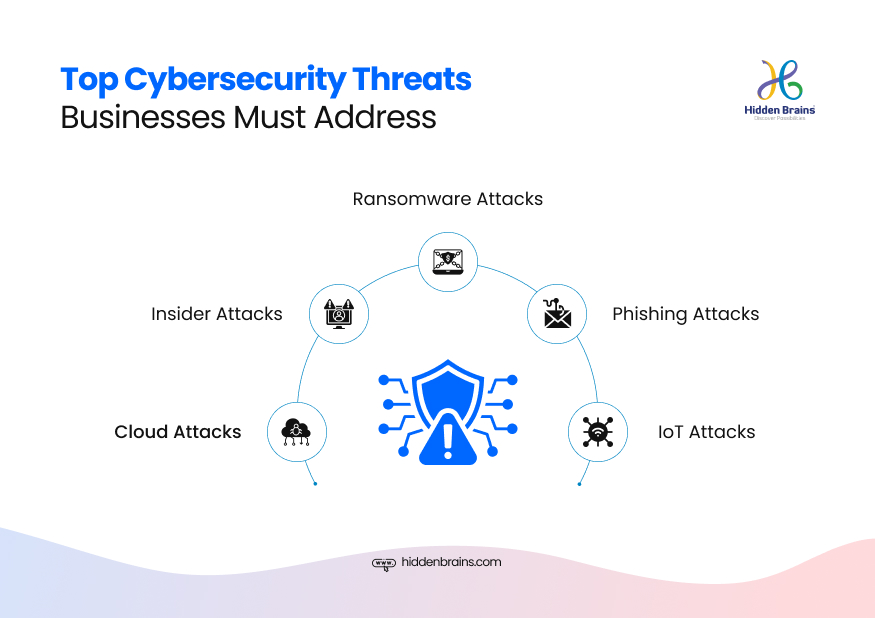
Financial assets and company reputations face multiple security risks because ransomware attacks combine with insider threats. Let’s evaluate and analyze the challenges of cybersecurity that businesses face today.
1. Cloud Attacks
The introduction of cloud computing platforms has revolutionized the software industry. It has also benefited sectors that deal with a vast amount of data. However, in recent years, cloud cyber attacks have become common for businesses worldwide, especially those dealing with data engineering, analytics, and cloud services. It is a relatively new enterprise cybersecurity threat that involves infiltration through service delivery models like SaaS.
2. Ransomware Attacks
Ransomware is one of the worst enterprise cybersecurity threats cyber attackers can create. The cyber attackers encrypt organizational information and extract payments from businesses to secure data release. Most companies choose to pay ransom but still cannot find assurance about their data retrieval. The attacks resulted in business financial hardships, operational period closures, and legal complications.
3. IoT Attacks
Due to poor security features, the Internet of Things (IoT) devices have created a critical cybersecurity challenge for enterprises. The IoT device’s vulnerable state is directly proportional to their security inadequacies which make them a very attractive hacking target. Miscreants can exploit network bugs to access the system unlawfully, leading to data theft and possibly even the execution of large cyberattacks.
4. Phishing Attacks
Among all Cybersecurity challenges, phishing is the most frequent method that causes employees to provide sensitive information. Attackers reach their stealing goals by creating fake messages and fake websites to obtain target users’ login information, sensitive data, and private information. Internal phishing breaches result in complete security loss for all organizations affected by the attack.
To strengthen overall protection in modern technology environments, prioritizing container security helps safeguard applications and their dependencies, ensuring that even if phishing attempts occur, critical workloads remain isolated and protected from unauthorized access.
5. Insider Attacks
The main security threats do not always target organizations from external sources. Insider attacks are one of the critical challenges of cyber security. Workers, through both deliberate actions and unintentional behavior, may result in security breaches. Data theft through malicious insider activity occurs, and careless worker behavior leads to scams and data mishandling incidents. Businesses need effective access monitoring systems and employee education to stop insider threats from occurring. Working with an ISO 27001 consultant can help organizations implement robust security controls and policies to minimize the risk of insider threats.
The Most Effective Techniques and Strategies to Increase Cybersecurity
Every organization faces the unavoidable challenges of cybersecurity, yet it must actively reduce these potential threats. Cybersecurity implementation requires a strategic approach that combines with advanced cyber tools.

Businesses must use multiple security layers while promoting constant monitoring and creating an information security-aware organization culture. Properly implementing protective measures allows businesses to safeguard their data alongside their systems and maintain their organizational reputation.
Here are the most advanced techniques you can use to secure your cyberspace:
1. Monitor External Attack Surfaces
During the day, cybercriminals are always looking at your website or app for a possible entry. It is a practice now that businesses need to regularly observe their digital assets to find issues and repair them even before hackers utilize them. Better yet, let’s talk about the best practices and the most recent security measures you can apply to monitor the possible invasions from outside.
Best Practices & Strategies for Protection
- Organizations can detect data leakages through External Attack Surface Management (EASM) while continuously monitoring exposed assets and mimicking domains to minimize early security threats.
- Technical systems should implement Zero Trust Security methodology by enforcing authentication rules with privilege restrictions to protect against unauthorized access points.
- Organizations should use AI-driven tools to examine threats in real time while predicting attack patterns to stop potential risks before they intensify.
- Protect information systems through multiple authentication techniques and establish strict rule systems for passwords to block unauthorized access.
Innovative Solutions Leading the Way
- EASM Platforms – Cyfax.ai and SOCradar.io are advanced tools which deliver real-time external risk visibility for business protection against cyber threats.
- AI-driven Threat Detection – Through machine learning technology organizations gain better abilities to find anomalies while also implementing preemptive security measures.
- Decentralized Security Models – Blockchain authentication systems strengthen identity ownership verification as they lower the vulnerability to attacks that exploit credentials.
2. Adopt Zero Trust Framework
Cybersecurity challenges are growing at a rapid speed. Traditional security perimeter defenses are no longer sufficient to reduce enterprise cybersecurity threats. Businesses now adopt Zero Trust Security since it begins with an assumption that no device or user can be trusted automatically from internal and external network locations. Organizations confirm all access requests before they grant access while maintaining operations at minimum functional levels.
Best Practices & Strategies for Protection
- Enforce Strict Identity Verification: To prevent any illegal entry, all users and devices, through the authorization process, must confirm their real identity.
- Limit Access with Least Privilege: Users should receive system access only up to their minimum needs because it decreases cybersecurity challenges when credentials fail.
- Strengthen Security with Multi-factor Authentication (MFA): Security needs protection through Multi-Factor Authentication MFA because single passwords fail to create a secure environment. Users experience better cybersecurity protection through MFA because it layers up security measures, which makes hackers’ access attempts significantly more difficult.
- Conduct Regular Audits & Penetration Testing: Cyber threats evolve rapidly. Routine security audits and penetration tests help identify weak points before attackers do.
- Educate Employees on Phishing Risks – Modern phishing attacks are incredibly convincing. Even tech-savvy employees can fall victim. Ongoing training ensures they recognize and avoid scams.
Also read: 11 Top Banking Technology Trends to Watch in 2025
Innovative Solutions Leading the Way
- Zero Trust Security Platforms: Solutions like iTrust and GhostWatch help businesses monitor and manage security in real-time.
- AI-powered Threat Detection: Artificial intelligence notably advances threat detection, automated responses, and customer behavior analysis to get apprehensive activity, which may later blow up.
- Behavior-based Security Measures: Security tools, which have been infused with AI, are continuously fed data related to customer behavior. They use this data to generate alerts and even cut off potential threats before they can access the user’s data.
3. Implement Multi-layered Security
With the increasing number of cybersecurity challenges, one security solution cannot efficiently protect the digital assets of various organizations. Organizations must incorporate more than just a single layer of defense and firewalls to protect against advanced cyber threats, such as encryption, endpoint protection, early warning mechanisms, and emergency event management processes. Organizations are able to defend the networks and the cybersecurity framework by creating two layers of defense (or “a back-up of defence” and “a system”).
Best Practices & Strategies for Protection
- Zero Trust Security: Never trust, always verify. To gain access to systems, every user or device must be authenticated by the system administrator.
- AI-driven Threat Detection: AI is able to identify cyber threats in real time. It is possible to prevent attacks before they unleash damage.
- Security Awareness Training: Workers must spot phishing, social engineering, and insider threats to stay away from becoming a victim of cybercriminals.
- Multi-factor Authentication (MFA): By providing an extra step in addition to passwords, you make accessing a system more difficult for hackers.
- Cloud Security & Encryption: Encryption should be activated while your data is in storage and during its migration to ensure its confidentiality.
- Incident Response Planning: It is necessary to run regular tests of security plans so that a team can respond reactively and minimize as much attack as possible.
- Supply Chain Risk Management: To guarantee that they are not the factors of security problems, external software providers and partners should be watched carefully by the operational management.
- Continuous Security Testing: Conduct penetration testing and red team exercises as a means of finding out the areas of vulnerability before an outfit does.
Innovative Cybersecurity Solutions
- Extended Detection & Response (XDR): An innovative security system that protects networks, cloud platforms, and devices in one place.
- Cybersecurity Mesh Architecture (CSMA): Ensures security tools work smoothly across different systems, no matter where they are.
- Blockchain for Security: Strengthens data integrity and authentication, making it harder for attackers to manipulate information.
- Passwordless Authentication: Replaces passwords with more secure options like biometrics and security keys.
Also read: How Much Does It Cost To Create a Blockchain App In India?
4. Standardize Software Bills of Materials (SBOMs)
Current software depends on many components, including open-source and third-party code. When firms do not keep proper track of software, they can inadvertently expose them to security risks. Furthermore, the challenges of cybersecurity prompted governments to introduce stricter regulations and policies. A Software Bill of Materials (SBOM) is a detailed inventory of all software components that can help companies recognize vulnerabilities, ensure compliance, and improve security.
Best Practices & Strategies for Protection
- Identify and Respond to Vulnerabilities: Due to the SBOMs being there to check the software components, it is now more straightforward and quicker to respond to security issues and fix them.
- Ensure Regulatory Compliance: Presently; some authorities enforce target companies’ compliance with data and information protection policies. They must have a software bill of materials (SBOM) for complete security transparency and risk management.
- Improve Risk Management: By using the software dependency hierarchy available to companies, companies will know better how to focus their security investments.
- Streamline Security Audits: In the occurrence of an audit, SBOMs will make the process easier with a clear list of all affected software and their security status.
- Enhance CI/CD Security: Using a uniform SBOM as the basis of a safer Continuous Integration/Continuous Deployment (CI/CD) pipeline secures this software development.
Innovative Cybersecurity Solutions
- “Shift-left” Security: Add security to the initial stages of the development process to minimize the chances that vulnerabilities will appear even before they emerge.
- Automated SBOM Generation: Find tools for automating the SBOM asset inventory, vulnerability scanning, and real-time visibility.
- AI/ML-powered Monitoring: Real-time security monitoring with machine learning is set up to detect threats quickly.
- Risk-based Remediation: Refocus on priority high-risk vulnerabilities based on the information in the SBOM.
- Strong Authentication & Least Privilege Access: Issue privileges to authorize only the specific employees with the access they need to perform their work, reducing the possibility of insider attacks.
Also read: 11 Ways You Can Use Python For Cybersecurity In 2024
5. Leverage AI for Threat Detection
The criminals of the cyber world now possess advanced AI-enabled hacking software that assists them in accessing security weaknesses. One of the predominant challenges of cybersecurity today is tackling black hat operators and hackers with their own AI systems for attack.
Businesses can only survive when they have access to AI-based cybersecurity that detects threats instantly and conducts pattern analysis to predict attacks before they happen. However, your AI-powered cybersecurity must have a commanding edge to tackle all cyber security challenges.
Best Practices & Strategies for Protection
- AI-powered Threat Detection: An AI system detects security threats by rapidly analyzing substantial database information to identify abnormal behavior patterns that suggest an attack.
- Proactive Security with Machine Learning: Artificial intelligence uses machine learning to adopt previous security incidents as data to prevent cyber attacks before they happen.
- Automated Threat Response: The automation of threat response lets AI identify and confine assaults independently, so human intervention becomes unnecessary.
- AI in DevSecOps: AI-driven security implementations must become embedded across the entire development lifecycle of AI-powered applications to protect them within DevSecOps.
Also Read: DevSecOps as a Service: The Future of Secure Software Development in 2025
Innovative Solutions Leading the Way
- Fortinet’s AI-driven Security: Uses AI to monitor and secure networks in real time.
- DarkTrace’s Proactive AI Detection: Identifies threats before they become significant issues.
- SentinelOne’s Automated Threat Response: Instantly detects and neutralizes cyber threats.
How Hidden Brains Can Help Businesses Tackle Modern Cybersecurity Challenges
At Hidden Brains, we don’t just build cybersecurity solutions we build trust, resilience, and long-term protection for businesses. As a premier software development service provider, we specialize in creating tailored IT security solutions that transform security challenges into growth opportunities.
With over 21 years of expertise, our team is dedicated to ensuring your enterprise stays secure and ahead of evolving threats. From compliance management, incident response, and recovery solutions to Application Security, DevSecOps, Cloud, and Data Security, we provide end-to-end protection using state-of-the-art tools and best practices. Leading global players hire dedicated developers from Hidden Brains to stay ahead of the competition.
A Decade-long Partnership: Securing EL.MO. Spa’s Global Security Solutions
Our strategic technology partnership with EL.MO. Spa, a global leader in security solutions, has redefined the cybersecurity landscape by delivering
Multi-Server-Multi-Client Connectivity for Seamless Security Operations
- Configurable CCTV Views to enhance real-time monitoring
- Dynamic Configuration Management for Flexible Security Controls
- Cybersecurity Fortification to safeguard critical infrastructure
- Licensing Policy Optimization to streamline security processes
Our Impact
- 1000+ Integrated Network Security Panels – Enabling security at scale.
- 30% Faster Incident Response – Accelerating threat detection and mitigation.
- 50% Cost Savings on Security – Delivering optimized, cost-effective solutions.
Frequently Asked Questions
As cybersecurity challenges become more advanced, enterprises must stay ahead with strong security strategies. Below are answers to some of the most pressing cybersecurity concerns.
What Are the Prominent Challenges of Cybersecurity in the 21st Century?
Challenges of cybersecurity are evolving rapidly, with ransomware, phishing, insider attacks, IoT vulnerabilities, and supply chain risks being major concerns. The shift to remote work and cloud computing has also created new attack surfaces that hackers exploit.
How Can Enterprises Overcome Growing Cyber Security Challenges?
Enterprises can combat cyber security challenges by adopting Zero Trust frameworks, leveraging AI-driven threat detection, implementing multi-layered security, and continuously monitoring vulnerabilities. Regular employee training and security audits are also crucial in preventing breaches.
How Can AI Help Enterprises Tackle Cybersecurity Challenges?
AI enhances cybersecurity by analyzing vast amounts of data in real time, detecting anomalies, predicting threats, and automating responses. Advanced AI-powered solutions like Fortinet, DarkTrace, and SentinelOne help businesses stay ahead of cybercriminals.
What Are the Best Ways to Fight Enterprise Cybersecurity Challenges?
A proactive approach is key. Enterprises should adopt strong identity verification (MFA), encrypt sensitive data, conduct regular security assessments, use SBOMs for software transparency, and integrate AI-powered security tools to ensure end-to-end protection.
What Are the Costs Companies Bear Due to the Challenges of Cybersecurity?
Cybersecurity breaches can lead to financial losses, legal penalties, reputational damage, and operational disruptions. Businesses may face data recovery costs, ransom payments, regulatory fines, and loss of customer trust. Investing in proactive security measures is far more cost-effective than dealing with a breach.
Bottom Line
Modern society demands cybersecurity protection because it is no longer optional but mandatory. Organizations staying in front of emerging cybersecurity challenges can achieve it through proactive security measures, including Zero Trust architecture, AI-powered threat identification, multi- layered defenses, and standardized product manifest data.
In response to advanced cyber security challenges, organizations must develop forward-looking security methods and deploy advanced security tools while simultaneously building cybersecurity awareness throughout their workforce.






























































































![Sales & Distribution [Oil & Gas] Sales & Distribution [Oil & Gas]](https://www.hiddenbrains.com/blog/wp-content/themes/blankslate/assets/images/sales_and_distribution-icon.74d08193.svg)

![Fluid Terminal Management [Oil & Gas] Fluid Terminal Management [Oil & Gas]](https://www.hiddenbrains.com/blog/wp-content/themes/blankslate/assets/images/fluid_terminal_management-icon.4b3a27a4.svg)































![Sales & Distribution [Oil & Gas] Sales & Distribution [Oil & Gas]](https://www.hiddenbrains.com/blog/wp-content/themes/blankslate/assets/images/sales_and_distribution-icon.74d08193.svg?1.0.0)
![Fluid Terminal Management [Oil & Gas] Fluid Terminal Management [Oil & Gas]](https://www.hiddenbrains.com/blog/wp-content/themes/blankslate/assets/images/fluid_terminal_management-icon.4b3a27a4.svg?1.0.0)





















































































































































































